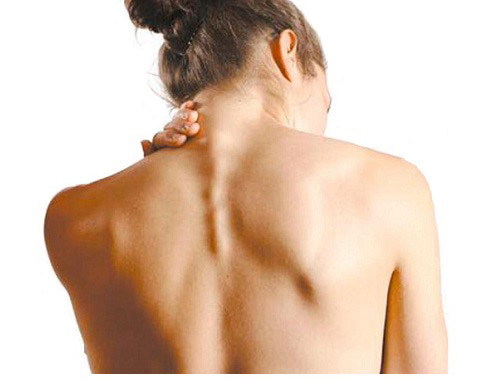Homocystinuria

Published: 18 Jun 2025
ICD9: 270.4 ICD10: E72.11 ICD11: 5C50.B
Homocystinuria is a rare, inherited metabolic disorder that affects the body's ability to process methionine, an essential amino acid found in protein.
This leads to a buildup of homocysteine in the blood and urine.
Here's a breakdown:
![]() What it is: It's an inherited (genetic) condition where the body cannot properly process methionine.
What it is: It's an inherited (genetic) condition where the body cannot properly process methionine.
![]() What causes it: It's usually caused by a deficiency in the enzyme cystathionine beta-synthase (CBS). This enzyme helps convert homocysteine to cystathionine. Less commonly, deficiencies in other enzymes or cofactors (like vitamin B6, B12, or folate) can also cause homocystinuria.
What causes it: It's usually caused by a deficiency in the enzyme cystathionine beta-synthase (CBS). This enzyme helps convert homocysteine to cystathionine. Less commonly, deficiencies in other enzymes or cofactors (like vitamin B6, B12, or folate) can also cause homocystinuria.
![]() What happens: When these enzymes are deficient, homocysteine builds up in the blood, urine, and other tissues. This can lead to a variety of health problems.
What happens: When these enzymes are deficient, homocysteine builds up in the blood, urine, and other tissues. This can lead to a variety of health problems.
![]() Why is it a problem?: The buildup of homocysteine can damage the lining of blood vessels, leading to an increased risk of blood clots, heart attacks, and strokes. It can also affect the eyes, skeleton, and brain.
Why is it a problem?: The buildup of homocysteine can damage the lining of blood vessels, leading to an increased risk of blood clots, heart attacks, and strokes. It can also affect the eyes, skeleton, and brain.
Symptoms:
The symptoms of homocystinuria can vary widely, even within the same family. They can range from mild to severe and often don't appear until childhood or later. Common symptoms include:
![]() Eye problems:
Eye problems:![]()

![]() Lens dislocation (ectopia lentis): This is a very characteristic symptom, where the lens of the eye shifts out of its normal position.
Lens dislocation (ectopia lentis): This is a very characteristic symptom, where the lens of the eye shifts out of its normal position.![]()

![]() Nearsightedness (myopia)
Nearsightedness (myopia)![]()

![]() Glaucoma
Glaucoma![]()

![]() Optic atrophy
Optic atrophy
![]() Skeletal problems:
Skeletal problems:![]()

![]() Tall, thin build (similar to Marfan syndrome)
Tall, thin build (similar to Marfan syndrome)![]()

![]() Long limbs and fingers (arachnodactyly)
Long limbs and fingers (arachnodactyly)![]()

![]() Chest deformities (pectus excavatum or pectus carinatum)
Chest deformities (pectus excavatum or pectus carinatum)![]()

![]() Scoliosis (curvature of the spine)
Scoliosis (curvature of the spine)![]()

![]() Osteoporosis (weak bones)
Osteoporosis (weak bones)
![]() Blood clots (thromboembolism): This is a serious complication that can lead to stroke, pulmonary embolism, and deep vein thrombosis.
Blood clots (thromboembolism): This is a serious complication that can lead to stroke, pulmonary embolism, and deep vein thrombosis.
![]() Developmental delays and intellectual disability: These are more common in individuals with severe homocystinuria.
Developmental delays and intellectual disability: These are more common in individuals with severe homocystinuria.
![]() Seizures:
Seizures:
![]() Psychiatric problems: These can include depression, anxiety, and behavioral disorders.
Psychiatric problems: These can include depression, anxiety, and behavioral disorders.
![]() Fair skin and hair: Less common, but can occur in some types of homocystinuria.
Fair skin and hair: Less common, but can occur in some types of homocystinuria.
Diagnosis:
![]() Newborn screening: In many places, homocystinuria is screened for at birth by testing a blood sample.
Newborn screening: In many places, homocystinuria is screened for at birth by testing a blood sample.
![]() Blood and urine tests: Elevated levels of homocysteine in the blood and urine can indicate homocystinuria.
Blood and urine tests: Elevated levels of homocysteine in the blood and urine can indicate homocystinuria.
![]() Enzyme assays: Measuring the activity of the CBS enzyme in liver or skin cells can help confirm the diagnosis.
Enzyme assays: Measuring the activity of the CBS enzyme in liver or skin cells can help confirm the diagnosis.
![]() Genetic testing: Genetic testing can identify mutations in the genes that cause homocystinuria.
Genetic testing: Genetic testing can identify mutations in the genes that cause homocystinuria.
Treatment:
The goal of treatment is to lower homocysteine levels in the blood. This can be achieved through:
![]() Dietary modifications: A low-methionine diet is often recommended. This involves limiting foods high in protein, such as meat, fish, poultry, dairy products, and eggs.
Dietary modifications: A low-methionine diet is often recommended. This involves limiting foods high in protein, such as meat, fish, poultry, dairy products, and eggs.
![]() Vitamin supplementation: High doses of vitamin B6 (pyridoxine) can help some individuals with CBS deficiency. Vitamin B12 and folate supplementation may also be helpful in some cases.
Vitamin supplementation: High doses of vitamin B6 (pyridoxine) can help some individuals with CBS deficiency. Vitamin B12 and folate supplementation may also be helpful in some cases.
![]() Betaine (trimethylglycine): This medication can help lower homocysteine levels by converting it to methionine.
Betaine (trimethylglycine): This medication can help lower homocysteine levels by converting it to methionine.
![]() Cystine supplementation: Cystine is often deficient in individuals with homocystinuria, so supplementation may be necessary.
Cystine supplementation: Cystine is often deficient in individuals with homocystinuria, so supplementation may be necessary.
Prognosis:
With early diagnosis and proper treatment, individuals with homocystinuria can live relatively normal lives. However, even with treatment, some individuals may still experience complications, such as blood clots or eye problems. Adherence to the prescribed diet and medication is crucial for managing the condition and preventing complications.
Important Note: This information is for general knowledge and informational purposes only, and does not constitute medical advice. It is essential to consult with a qualified healthcare professional for any health concerns or before making any decisions related to your health or treatment. If you suspect you or someone you know may have homocystinuria, seeking prompt medical evaluation is crucial.